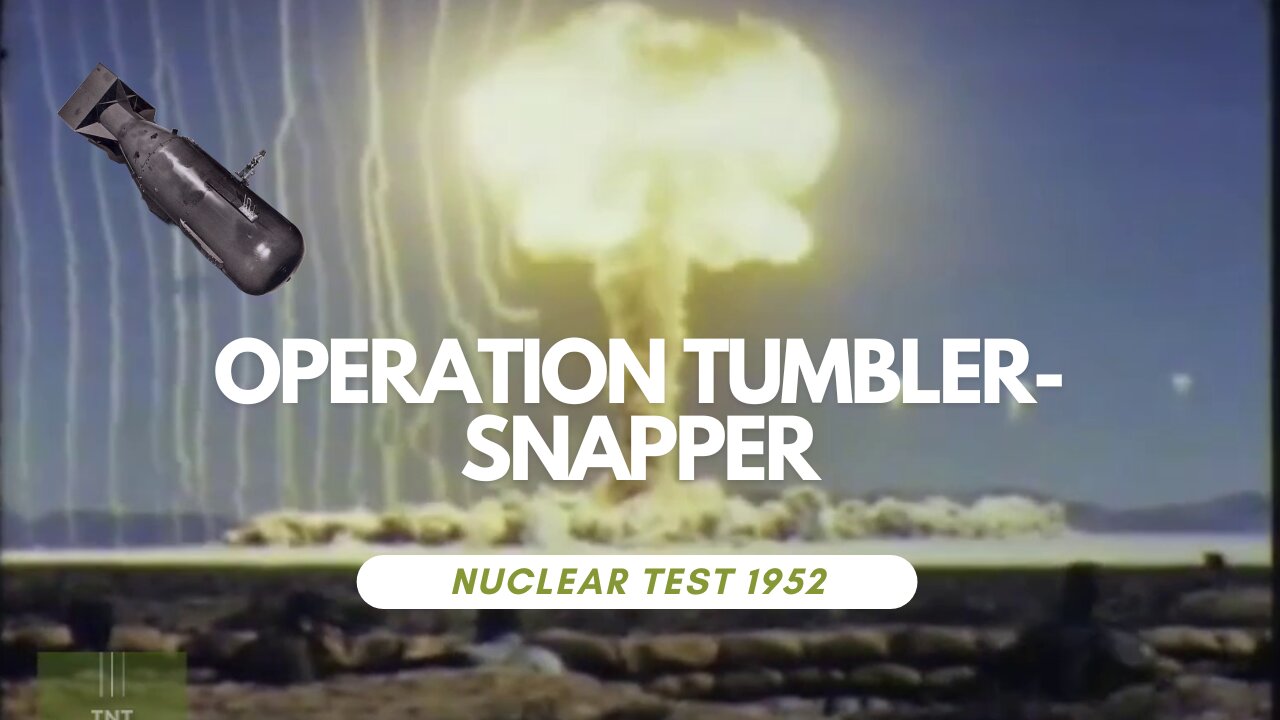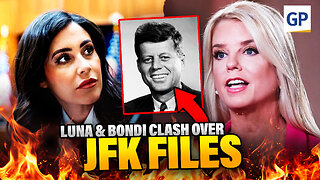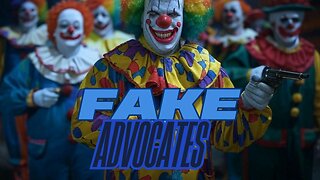Premium Only Content

Nuclear Test Film 1952: Operation Tumbler-Snapper
Operation Tumbler-Snapper comprised eight nuclear tests, conducted in two distinct phases. The initial phase, known as Tumbler, held paramount importance for the Department of Defense, focusing on airdropped nuclear weapons tests. The subsequent Snapper phase involved a series of experiments conducted collaboratively by the Atomic Energy Commission and the Los Alamos Scientific Laboratory, with the aim of enhancing our understanding of nuclear weapon effects.
The series commenced with "Able," an airdrop event on April 1, 1952, which yielded one kiloton. Among the experiments conducted during this phase was the analysis of shock waves generated by the detonation. Following closely, the "Baker" blast on April 15, 1952, also producing a one-kiloton yield, contributed valuable weapons effects data.
Notably, the news media was granted access to witness the "Charlie" nuclear detonation, marking a first at the Nevada Proving Ground. They observed from a vantage point known as "News Nob," situated approximately seven miles away. Additionally, around 2,000 Army personnel, including paratroopers, executed maneuvers beneath the towering mushroom cloud. The colossal 31-kiloton explosion on April 22, 1952, was one of the largest ever conducted in Nevada up to that point.
Moving on to the "Dog" shot on May 1, 1952, which yielded 19 kilotons, the Marines had their opportunity to participate in a nuclear exercise. They embarked on a mission, traveling in trucks towards ground zero, until intolerable radiation levels compelled them to abort the mission.
The "Easy" shot, producing 12 kilotons on May 7, 1952, provided scientists with a unique opportunity to photographically capture the birth of the blast in milliseconds. This minuscule timeframe was all the scientists had before the upper portion of the tower was engulfed by the fireball.
The sixth shot, "Fox," was an 11-kiloton test related to weapons development, witnessed by approximately 1,000 military observers from a distance of 7,000 yards on May 25, 1952. These soldiers were engaged in radiation monitor training. Notably, a military display area filled with jeeps, tanks, machine guns, and artillery pieces had been established, almost directly beneath the shot tower, and all of this hardware was ultimately demolished.
The final two shots within Operation Tumbler-Snapper, both related to weapons development, were "George" (15 kilotons) on June 1, 1952, and "How" (14 kilotons) on June 5, 1952. These tests marked the culmination of a series that significantly contributed to our understanding of nuclear weapons and their effects.
✅ Express your opinions and be heard by signing up on YouGov.com.
YouGov: https://bit.ly/Signup-on-YouGov
🐦 Follow TNT History on Twitter: https://twitter.com/history_tnt
✅ Hostinger.com Everything You Need to Create a Website - Up to 75% off Hosting
https://bit.ly/Hostinger-75-Percent
Visit Jadesales.shop for Reliable and Affortable Products - Free Shipping on Orders over $45
Electronics: https://bit.ly/Electronic-Collection
Health Products: https://bit.ly/Health-Items
School Supplies: https://bit.ly/Jade-Sales-School-Supplies
Playing with Fire - creator's link below
https://icons8.com/music/track/playing-with-fire--1
-
 1:08:28
1:08:28
In The Litter Box w/ Jewels & Catturd
1 day agoCrenshaw Threatens Tucker | In the Litter Box w/ Jewels & Catturd – Ep. 749 – 2/25/2025
77.7K39 -
 44:57
44:57
Standpoint with Gabe Groisman
1 day agoWill Byron Donalds Run for Florida Governor? With Congressman Byron Donalds
35.1K6 -
 1:06:25
1:06:25
Savanah Hernandez
3 hours agoEXPOSED: FBI destroys evidence as NSA’s LGBTQ sex chats get leaked?!
53.8K18 -
 1:59:58
1:59:58
Revenge of the Cis
5 hours agoEpisode 1452: Hindsight
49.7K4 -
 1:20:35
1:20:35
Awaken With JP
7 hours agoCrenshaw Threatens to Kill Tucker and Other Wild Happenings - LIES Ep 80
115K66 -
 1:32:19
1:32:19
Russell Brand
6 hours agoBREAK BREAD EP. 15 - LECRAE
121K10 -
 1:37:26
1:37:26
The Officer Tatum
6 hours agoLIVE Rachel Maddow, Don Lemon MELTDOWN Over Joy Reid's FIRING! + More Ep 68
77K37 -
 1:11:24
1:11:24
The Gateway Pundit
4 hours agoEpstein & JFK Files BLOCKED: Luna’s SHOCKING Clash with Pam Bondi! | Elijah Schaffer & Jim Hoft
138K47 -
 1:12:42
1:12:42
John Crump Live
9 hours ago $0.58 earnedFake Gun Advocates.
12.6K1 -
![[Ep 616] Colony Ridge History & Raids | Guest: Elsa Kurt | Crenshaw Unhinged – Wants to Kill Tucker](https://1a-1791.com/video/fwe1/4d/s8/1/K/3/M/j/K3Mjy.0kob-small-Ep-616-Colony-Ridge-History.jpg) 2:00:45
2:00:45
The Nunn Report - w/ Dan Nunn
4 hours ago[Ep 616] Colony Ridge History & Raids | Guest: Elsa Kurt | Crenshaw Unhinged – Wants to Kill Tucker
27.1K12